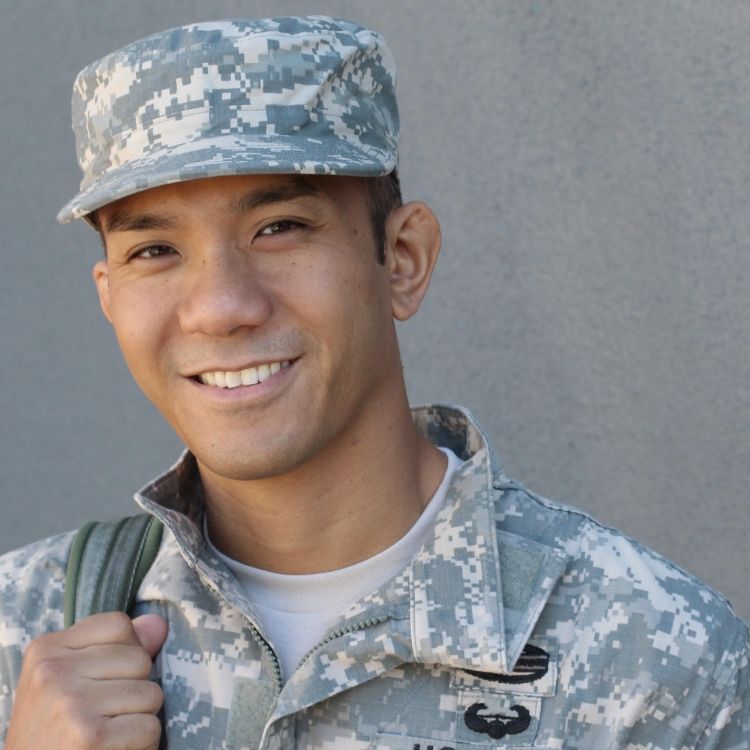The veteran hiring landscape has transformed over the past few years, which means companies need to constantly evolve their veteran hiring practices to match the changing veteran talent market and the changing needs of veterans. To learn more about this background, check out our post on the need to turn veteran jobs into veteran careers.
These are 13 best practices for hiring veterans we’ve developed working with our clients and nonprofit veteran groups.
Focus on the entire military family
When building a veteran hiring strategy, start broad. While the veteran unemployment rate has fallen drastically over the past five years, veteran spouses still have an unemployment rate of 18 percent. We live in a world where families need two incomes to get by. Hiring Our Heroes is working to draw attention to the unique challenges faced by military spouses. Read more about those challenges and our work with Hiring Our Heroes here.
Meet candidates on military-friendly job boards
We know most candidates look for jobs online, and veterans are no different. Organizations looking to hire veterans should identify which opportunities fit with the skill sets of veteran candidates and post those jobs on veteran job boards. Meet veterans where they are.
Write job postings in military-friendly language
Any jobs on military-friendly job boards or targeting veteran candidates should be written in military-friendly language. Communicating with veteran candidates in familiar language demonstrates an organization’s military-friendly culture and commitment to veteran hiring. It also drives more veteran candidates because those candidates understand exactly what the posting is looking for.
Gain executive sponsorship for your veteran program
A successful veteran hiring program needs to have strong commitment throughout the organization from the top down. Executive sponsorship of veteran hiring programs empowers everyone in the organization to implement many of these best practices.
Create a military hiring website separate from a traditional careers page
A separate veteran careers page gives organizations the ability to speak directly to veteran candidates about their veteran hiring programs and commitments. By separating this careers page from civilian candidates and even other diversity outreach programs, organizations can demonstrate their commitment and direct veterans to opportunities identified as fitting well with veteran skill sets.
Highlight veteran employees who have made a successful transition to civilian employment
On that separate careers page, organizations should showcase successful veteran employees, especially those who have been promoted and are building careers within the organization. As we discussed in our previous blog post, many veterans say they take their first civilian job to make ends meet. However, 44 percent of veterans leave that job within the first year, often for a position with better pay and more opportunity for advancement. By communicating other veteran success stories, organizations can show their commitment to veteran careers rather than just veteran jobs.
Develop a veteran talent community to capture both active and passive candidates
For active candidates, a veteran talent community provides information about the job postings.
It’s more nuanced with passive candidates. We know passive veteran candidates are often nearing the end of their military career and starting to think about the transition. As they finish their career, they may also be anticipating a move, and that might be holding back their civilian job search.
A veteran talent community helps nurture veterans through that process. We know it’s important to capture and communicate with passive veteran candidates because the earlier a veteran starts their job search process, the more time they have to find the right position. That means they won’t feel as pressured to take the first job offer they receive, whether or not it’s the right fit.
Form a dedicated veteran sourcing/recruiting team made up of veterans who have made a successful transition to civilian employment
Veterans report their biggest challenge in job hunting is deciding which career path they want to pursue. Talking to someone who has already gone through this experience can help the veteran work through this process and find a job that can become a career.
These veterans on this sourcing and recruiting team can also help veteran candidates tailor their resumes and practice for interviews. They can pull from their own experience to offer better advice and support.
Educate recruiters to read military resumes and translate skills so they can be advocates for veteran candidates
According to a study by the U.S. Chamber of Commerce Foundation, more than half of HR professionals say they have little to no knowledge of military rank and structure. Recruiters need ongoing training about military resumes and skill sets because they need to demonstrate to hiring managers why a veteran candidate is a good fit for their position. One of the biggest challenges in veteran hiring is moving past the knowledge gap most civilians have about the military.
Create a process to screen and prioritize military candidates
This process can look different for different organizations depending on their veteran hiring goals. To identify candidates, organizations can make sure a question in the application process allows veterans to self-identify. Then, it’s up to the organization how much it wants to prioritize those candidates. One option is to prioritize veterans behind internal candidates but ahead of all other external candidates. Organizations can also decide if they want to advertise this prioritization. Publicizing it can increase the number of military applicants.
Create one designated point of contact for federal, state and non-profit military organizations that can funnel military candidates
Across the U.S. there are more than 800 federal, state, and non-profit military organizations. All of them can help funnel veteran candidates looking to make the transition into civilian employment. One contact for all of these veterans’ organizations can share information about job opportunities and funnel these candidates into the recruitment process. This can yield hundreds of prescreened candidates a week. It’s free to source candidates from these organizations. Someone just needs to manage it.
Use social media marketing to reach veterans for a greater ROI over traditional career fairs
Like all job hunters, veteran candidates are using social media as part of their job search. Reach veterans where they are. While more traditional veteran career fairs prove to be successful for some organizations, they are expensive. Using social media marketing can put job openings in front of more candidates for less money.
Establish a veteran affinity group to create a supportive environment for veteran employees
The process of hiring a veteran is just the first step. We need to think of the transition to civilian work as a process, and not just a job offer. A veteran resource group helps veteran employees become a part of the culture and the team. Of the 44 percent of veterans who leave their first post-military job within one year, nearly one-third say they had difficulty relating to their coworkers and to the company. A veteran resource group helps address veteran employee retention.



